Heat Rejection Equipment for Data Centers: Cooling Towers and Beyond
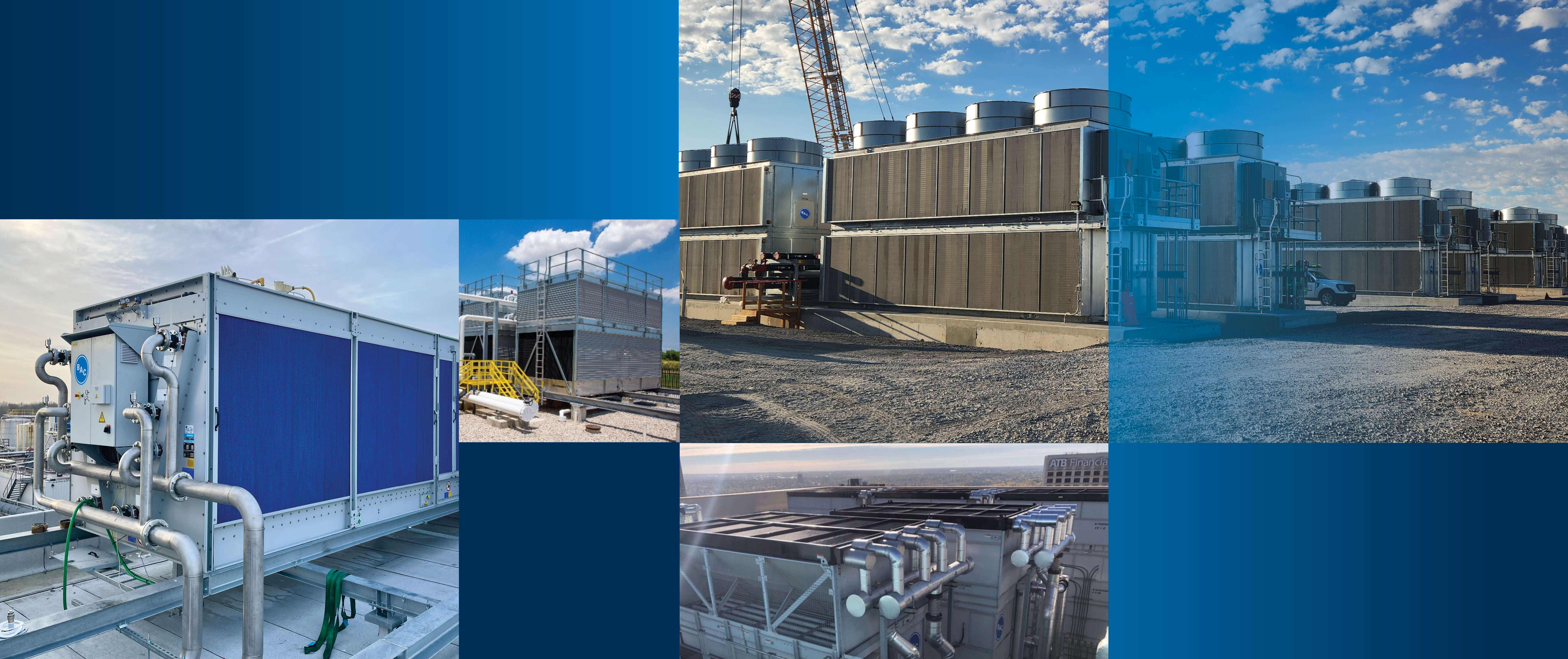
The thermal management of modern data centers presents a sophisticated engineering challenge, particularly as computing densities surge to accommodate the exponential growth in artificial intelligence, machine learning, and high-performance computing.
Central to maintaining system integrity and operational reliability is the effective dissipation of heat, a task in which cooling towers play a critical role.
As engineering professionals, we understand that cooling towers function as the critical stage in the heat rejection process, facilitating the transfer of thermal energy from the data center's internal systems to the external environment.
In this context, understanding the structural and functional distinctions between cooling tower architectures is vital. Each type presents unique thermal performance characteristics, water and energy consumption profiles, and operational tradeoffs.
The aim is to support facility engineers and data center decision-makers in making informed, application-specific selections that are grounded in reliability, efficiency, and long-term operational resilience.
Importance of Efficient Cooling
In the design and operation of data centers, cooling efficiency is a decisive factor that impacts energy consumption, system reliability, and long-term sustainability. Rather than being a peripheral concern, cooling performance lies at the core of data center economics and environmental responsibility.
Cooling towers play a central role in determining the efficiency of thermal rejection systems.
Their influence extends directly to metrics such as Power Usage Effectiveness (PUE), which quantifies the total energy used by the facility about the energy delivered to IT equipment, and Water Usage Effectiveness (WUE), which assesses the volume of water consumed by IT energy use.
These metrics are critical not only from a performance perspective but also in the context of regulatory compliance and corporate sustainability initiatives.
Different types of cooling towers offer distinct operational profiles. Understanding these system-level tradeoffs allows engineers and facility managers to make informed decisions based on site-specific parameters. For instance, a facility in a water-stressed region may prioritize closed-circuit or hybrid designs to limit water use. At the same time, a high-density urban data center might favor systems that minimize noise and footprint.
Overview of Cooling Tower Function in Data Centers
Cooling towers serve as the terminal stage of the thermal rejection cycle in a data center's cooling architecture. Their primary function is to discharge the accumulated heat, extracted from IT equipment and transported via a primary or secondary fluid loop, into the ambient environment.
This step is essential to maintaining thermal equilibrium within high-density server environments, especially under elevated compute loads characteristic of artificial intelligence and machine learning applications.
Cooling towers are broadly categorized based on their airflow dynamics and operational principles and are discussed as follows:
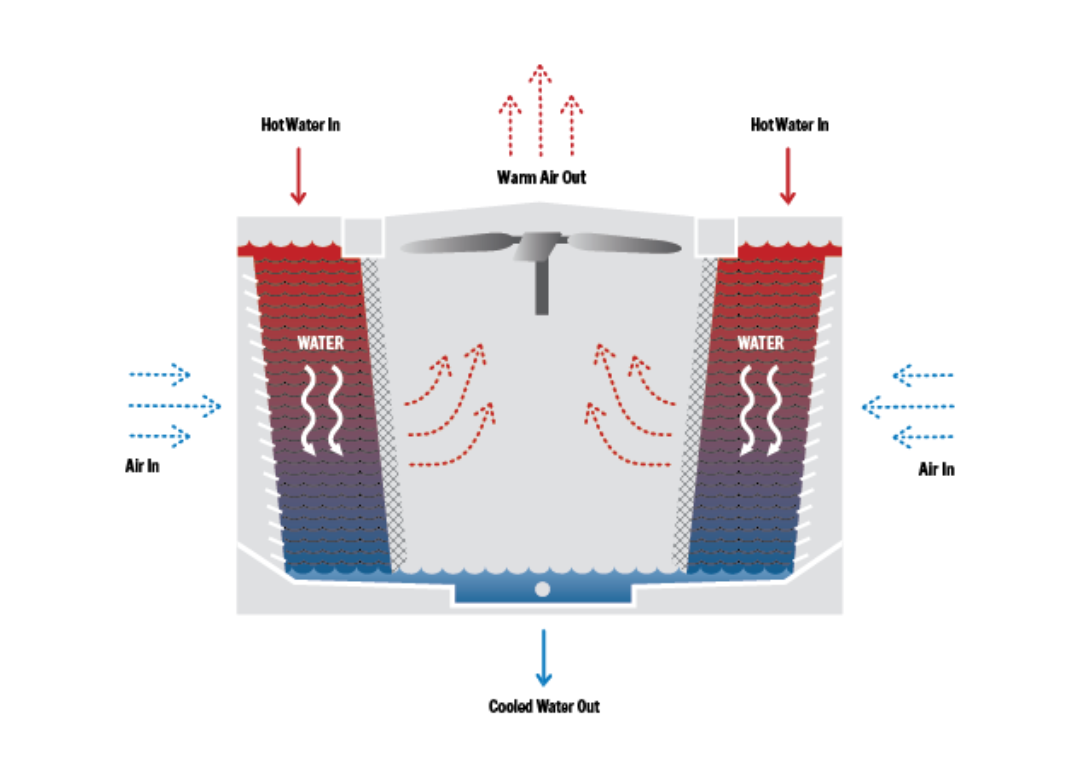
Induced draft towers employ high efficiency axial fans positioned at the top of the structure to draw ambient air upward through the system. This configuration enhances air to water interaction across the fill media, resulting in superior evaporative cooling performance.
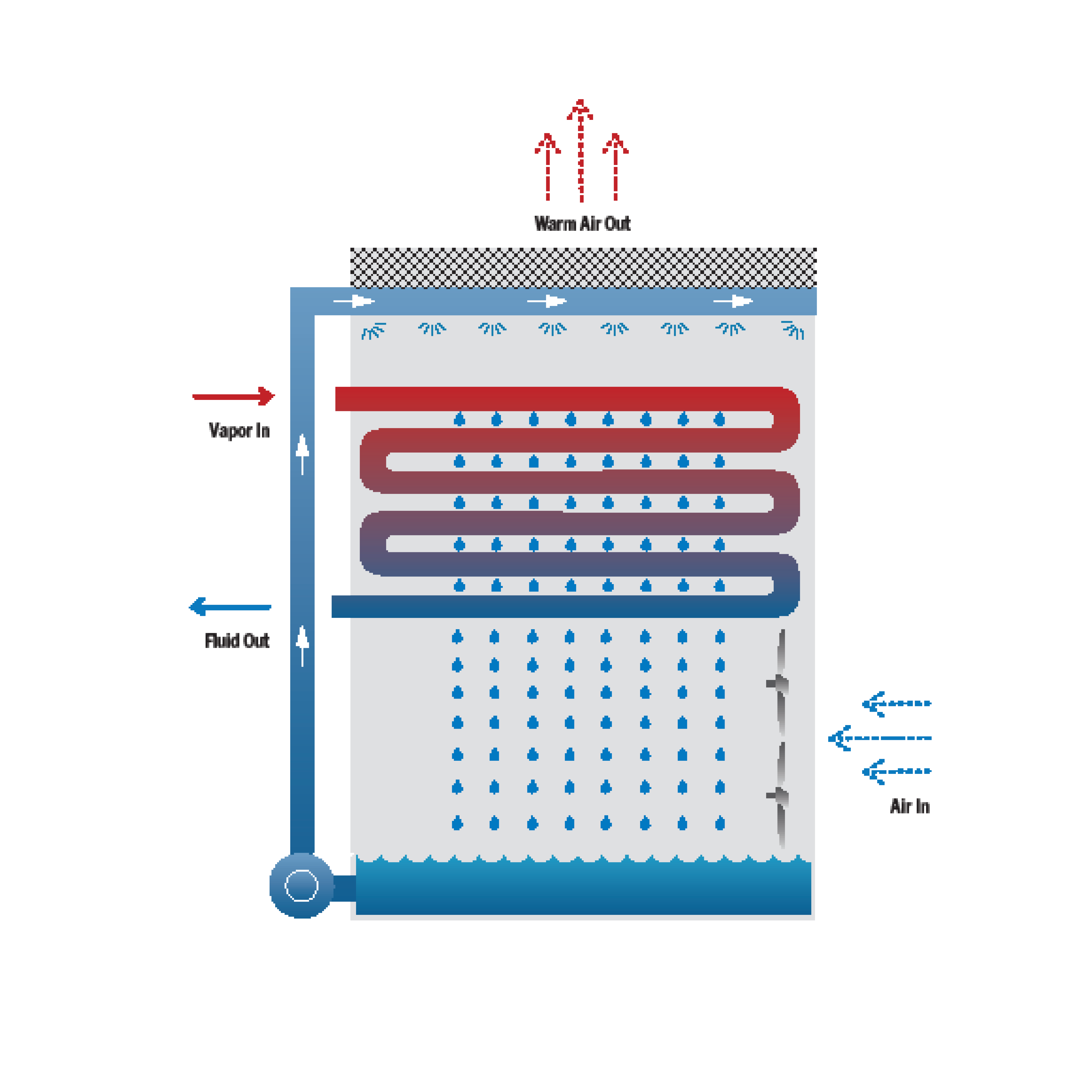
Forced draft towers, in contrast, use fans located at the base or sides to push air horizontally or vertically into the tower. These systems often feature a more compact vertical profile and are beneficial where building height or visual impact is a concern.
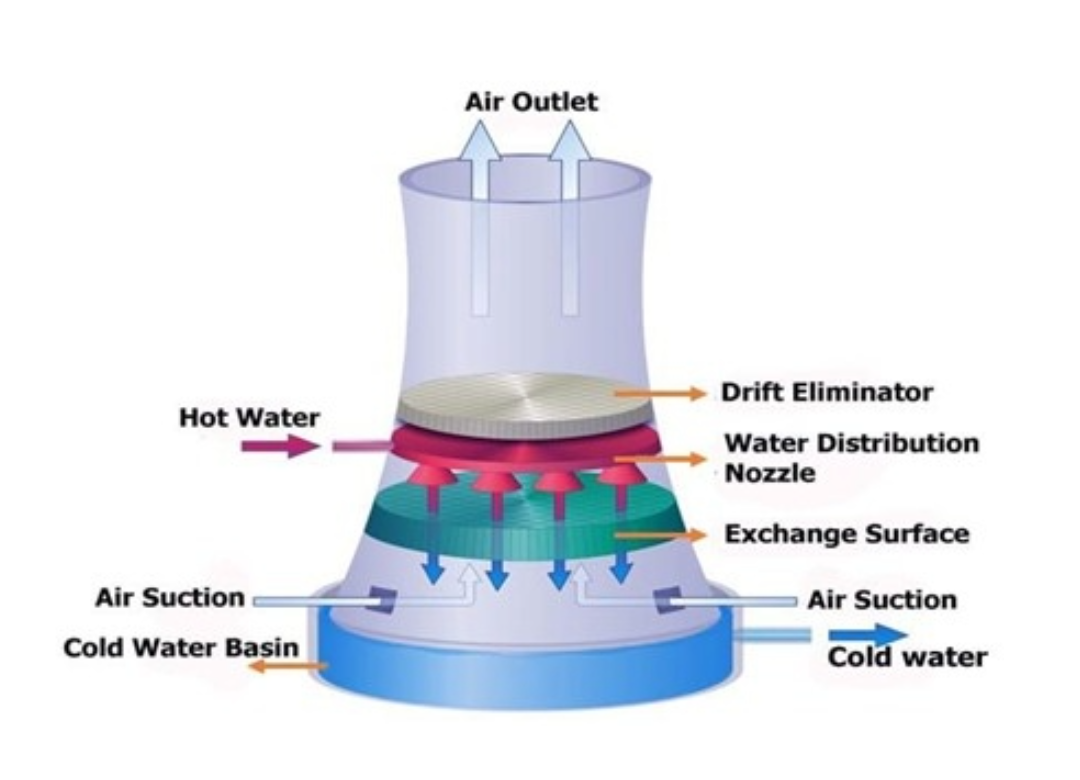
Natural draft towers, while relatively rare in the context of commercial data centers, leverage the buoyant rise of warm air to induce airflow without mechanical assistance. Their substantial height and airflow dependency make them viable only in specific, often custom engineered, applications.
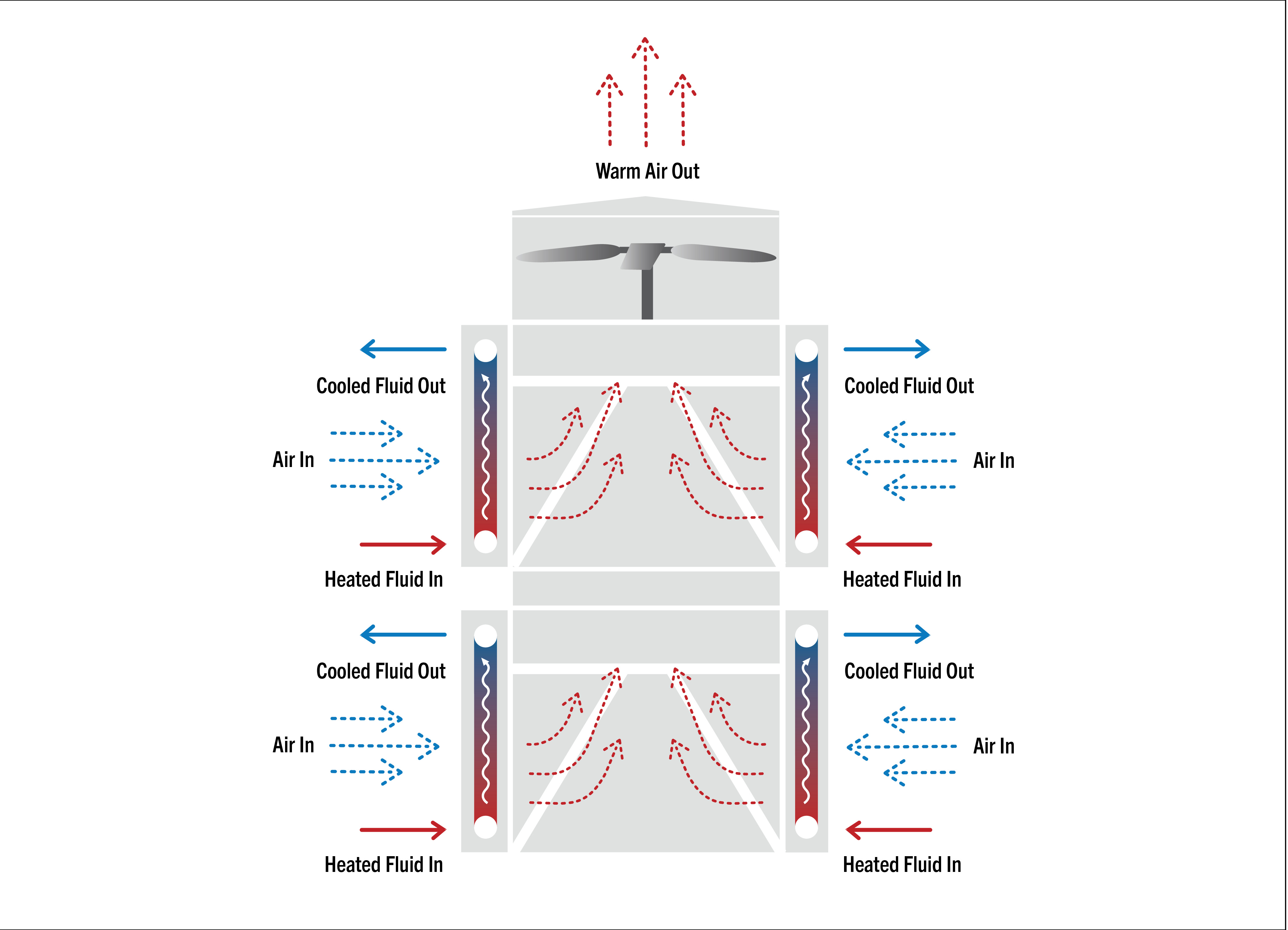
Dry coolers, though not classified as evaporative cooling towers, fulfill a comparable thermal function by using air as the heat rejection medium without water. These systems are equipped with finned coils and axial fans to dissipate heat, making them ideal in water scarce environments or in jurisdictions with strict plume and water use regulations.
Each of these tower types supports a distinct set of operating conditions and engineering constraints. Selecting the appropriate system involves a comprehensive evaluation of climate variables, water and energy availability, acoustic requirements, spatial allowances, and the thermal performance envelope of the data center.
Operating Principles of Cooling Towers
Cooling towers function on fundamental principles of thermodynamics, where heat is transferred from a warmer medium to a cooler one through either evaporation or air-to-fluid heat exchange. In the context of data centers, these systems manage the removal of heat from circulating process fluids that have absorbed thermal energy from IT equipment.
In open circuit systems, warm water is distributed over fill media inside the tower. As ambient air is drawn through or pushed into the structure, a portion of the water evaporates. This phase change removes heat from the remaining water, lowering its temperature. The cooled water is then collected at the base and pumped back through the data center to absorb additional heat.
Closed circuit systems differ in that the process fluid is enclosed within a heat exchanger coil. Water is sprayed externally over the coil and air is circulated across the surface to cool it. This setup prevents the process fluid from being exposed to the environment, reducing fouling and contamination risks. It also allows the use of water with fewer chemical additives, lowering operational complexity and maintenance.
Hybrid coolers combine the features of both wet and dry designs. These systems offer operational flexibility by allowing mode switching between dry and wet operation. During cooler periods or reduced thermal load, they may run dry, using only air to cool the fluid. During peak conditions, the system introduces water spray to boost cooling capacity through evaporation.
Ultimately, the operating mode selected influences water consumption, energy usage, heat rejection efficiency, and maintenance requirements. A thorough understanding of these principles enables engineers and system designers to select cooling solutions that align with performance objectives, site conditions, and sustainability targets.
Key Cooling Tower Components
A well-designed cooling tower is composed of several critical components, each engineered to optimize heat rejection efficiency and system reliability:
- Fill Media: This structured packing material increases the contact surface area between air and water, enhancing evaporative cooling by maximizing heat and mass transfer.
- Fans: Axial or centrifugal fans facilitate air movement through the tower. Their configuration, induced or forced draft, determines airflow direction and system performance. BAC also offers whisper quiet fans for sound sensitive installations.
- Water Distribution System: Includes nozzles, piping, and spray headers or distribution basins that evenly distribute hot water over the fill. Uniform coverage is essential for consistent thermal performance.
- Drift Eliminators: These components capture water droplets entrained in the air stream, preventing moisture loss and minimizing environmental impact.
- Cold Water Basin: Located at the base of the tower, this reservoir collects cooled water before recirculation. Proper design ensures sufficient capacity and allows for sediment management.
- Heat Exchanger Coils (in closed loop cooling towers and hybrid products): These sealed coils contain the process fluid and allow indirect heat transfer to the external spray water.
- Pumps (in closed circuit cooling towers and hybrid products): Pumps are used to circulate the water or glycol through the unit's internal circuit including the coil.
- Casing Panels, Combined Inet Shields and/or Louvers: Structural elements that enclose the system and manage airflow direction, minimizing recirculation and optimizing efficiency.
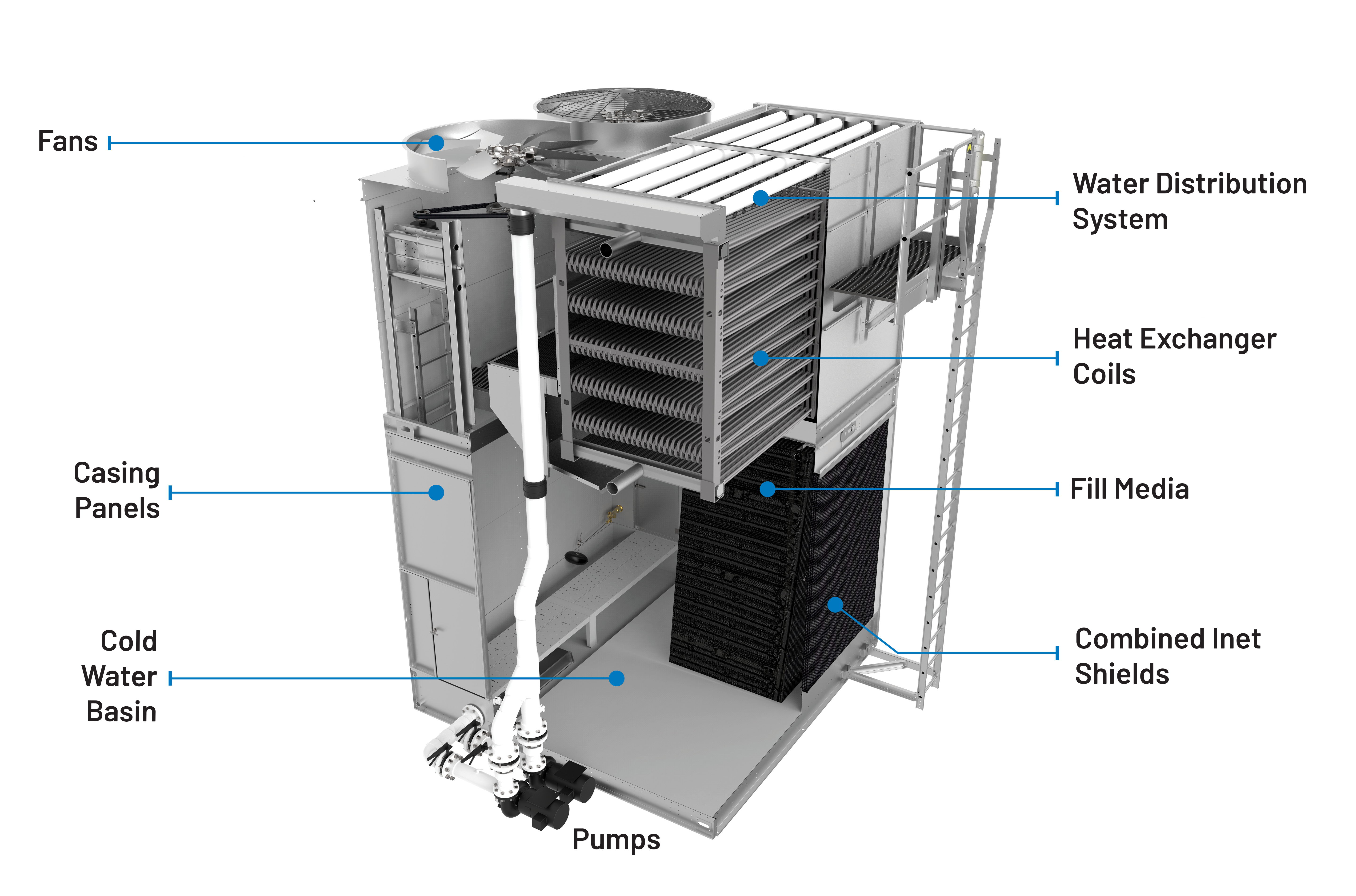
Understanding the role of each of these components is essential when evaluating the suitability and long-term maintenance requirements of different cooling tower designs. Their integration and performance directly influence operational stability, thermal capacity, and overall system efficiency.
Efficiency and Sustainability Metrics
Different cooling tower designs significantly influence key performance metrics, including energy consumption, water efficiency, and environmental impact. These indicators not only determine operational expenditure but also affect compliance with sustainability targets and green building certifications.
Industry benchmarks such as Power Usage Effectiveness (PUE) and Water Usage Effectiveness (WUE) provide standardized frameworks for assessing data center sustainability. The integration of intelligent controls, variable speed drives, and climate-responsive design can enhance these metrics and allow for more precise tuning of performance. Companies like BAC, the world’s cooling partner, lead the industry in designing cooling technologies that align with these evolving efficiency and sustainability metrics. By integrating smart controls, sustainable materials, and advanced thermal design, BAC solutions help data centers reduce operational costs and environmental impact while maintaining reliability.
Energy Efficiency and PUE
Power Usage Effectiveness (PUE) remains a central metric in assessing data center energy efficiency. It represents the ratio of total facility energy to the energy used by IT equipment alone. Cooling systems, particularly cooling towers, play a substantial role in determining this ratio.
Open circuit towers, while effective at thermal rejection, may lead to higher parasitic loads due to pump and fan operation. Closed circuit and hybrid systems can reduce energy use by eliminating the need for constant water treatment or by operating in dry mode during favorable weather conditions. The use of advanced controls, thermal storage, and high-efficiency motors further contributes to improved PUE.
Water Usage Effectiveness (WUE)
Water Usage Effectiveness (WUE) quantifies the amount of water consumed per unit of IT energy use in a data center. This metric is particularly important in locations where water resources are limited or where environmental regulations are stringent.
Open circuit systems generally have higher water consumption due to evaporative losses and regular blowdown, which impacts WUE negatively. In contrast, closed circuit and dry cooler systems greatly reduce water usage by avoiding direct contact between process fluids and ambient air.
Mechanical draft cooling towers, the most common type used in data centers, rely on fans to move air through the system. These towers can be configured as either induced draft or forced draft systems.
Induced draft towers draw air upward through the tower using fans mounted at the top. This design promotes effective air and water contact, making it highly efficient in large-scale or high-performance data center environments.
Forced draft towers, by contrast, use fans positioned at the base or sides to blow air into the system. This layout can be advantageous in facilities with height restrictions or where specific airflow patterns are desired. However, it typically results in higher fan energy consumption and may be less efficient in dissipating heat compared to induced draft models.
Water Management and Maintenance
Effective water management and maintenance practices are critical for ensuring the long-term performance and sustainability of cooling towers in data center environments. Open circuit towers typically require more intensive water management due to their direct exposure to ambient air, which leads to greater water loss through evaporation, drift, and blowdown. Closed circuit systems mitigate some of these concerns by separating process fluid from the environment, reducing contamination and scaling potential.
Regular maintenance schedules, including inspections, cleaning, and system recalibrations, help maintain optimal thermal performance and extend equipment life. Advanced automation and monitoring technologies, such as real-time sensors and predictive maintenance platforms, can improve operational reliability and resource efficiency.
Cycles of Concentration Management
Cycles of concentration (CoC) refer to the ratio of dissolved solids in circulating water compared to the make-up water. Higher cycles indicate greater water reuse, but if left unchecked, can result in scaling, corrosion, and biological fouling. Managing this balance is especially important in open circuit systems, where continuous evaporation leads to increased solute concentration.
Water treatment programs, including chemical dosing and periodic blowdown, are employed to maintain acceptable CoC levels. Digital monitoring tools enable precise control and help reduce both water consumption and chemical usage, thereby improving overall environmental performance and lowering operating costs.
Water Treatment Best Practices
Maintaining water quality in cooling towers is essential to prevent issues such as scaling, corrosion, and microbial growth. Consult with a local water treatment specialist to determine the best course of action for your specific site requirements. Best practices involve a combination of mechanical filtration, chemical treatment, and automated dosing systems to ensure the circulating water remains within specified quality parameters. For additional water quality guidelines, click here.
Evaluating cooling system performance in modern data centers requires a balanced approach to both energy and water use. Different cooling tower designs significantly influence key performance metrics, including energy consumption, water efficiency, and environmental impact. These indicators not only determine operational expenditure but also affect compliance with sustainability targets and green building certifications. For BAC's full water treatment recommendations, click here.
Design Considerations and Future Trends
As data centers become more sophisticated and sustainability-focused, design decisions related to cooling towers must consider multiple performance factors, including energy efficiency, water consumption, lifecycle costs, and environmental impact. The growing importance of ESG compliance and net-zero objectives also drives demand for technologies that align with long-term climate and operational goals.
Next-generation cooling towers are increasingly being designed with materials that offer improved corrosion resistance, reduced weight, and enhanced thermal conductivity. In addition, smart control systems that adapt fan speeds, water flow rates, and operational modes in real time based on load and ambient conditions are gaining traction. These innovations not only enhance efficiency but also prolong equipment life and improve reliability.
Airflow Containment Strategies
Effective airflow containment is essential in maximizing cooling efficiency within data centers. By preventing the mixing of hot and cold air streams, containment strategies reduce the load on cooling towers and associated HVAC systems. The type of cooling tower chosen can influence how air is managed inside the facility.
Climate-Based System Selection
Regional climate conditions play a critical role in cooling tower selection. In arid zones, closed-circuit and dry cooling systems are typically favored due to their lower water requirements and improved operational reliability under low humidity conditions. These systems can also mitigate the risk of plume formation and reduce the need for water treatment. Local regulations regarding water use, noise levels, and heat rejection must also be considered during the system selection process.
Emerging Cooling Technologies
A wave of innovation is reshaping data center cooling practices, with several emerging technologies redefining the capabilities of traditional cooling towers. These include integrated adiabatic systems, heat recovery units, and low-GWP refrigerant options designed to align with decarbonization goals.
Additionally, advancements in predictive maintenance, IoT-based monitoring, and autonomous control platforms allow real-time optimization of tower operations, improving both uptime and resource utilization. The combination of these innovations positions emerging systems as both cost-effective and environmentally aligned alternatives to conventional cooling infrastructure.
In Summary
Cooling towers are not merely auxiliary components but are foundational to the thermal and operational integrity of modern data centers.
With a growing emphasis on energy efficiency, water stewardship, and environmental performance, the choice and configuration of cooling tower systems have never been more consequential.
Whether evaluating mechanical draft technologies, exploring dry and adiabatic alternatives, or integrating cutting-edge monitoring and control platforms, decision-makers must approach system selection as a strategic design decision.
By aligning cooling tower strategies with both technical requirements and sustainability objectives, data centers can ensure long-term reliability, cost-effectiveness, and environmental responsibility in an increasingly demanding digital landscape.
